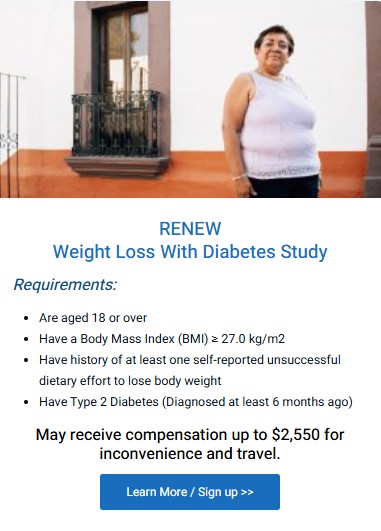
When Growing Up Hurts: Understanding and Managing Migraines in Children (Pediatric Migraines)
Growing up isn’t easy for children. From navigating school and friendships to adjusting to the physical and emotional changes of adolescence, kids have a lot on their plates. But for some children and teens, there’s an added layer of hardship that often goes unseen: chronic migraine headaches. While many associate migraines with adults, pediatric migraines are more common than most realize—and they can have a profound impact on a child’s quality of life.
Understanding Pediatric Migraines
A migraine is more than just a headache. It’s a complex neurological condition marked by recurring attacks of moderate to severe head pain, often accompanied by nausea, vomiting, and heightened sensitivity to light, sound, or smells. Pediatric migraines can look slightly different from adult migraines in their presentation and frequency, making diagnosis and treatment even more challenging.
According to the American Migraine Foundation, about 10% of school-aged children suffer from migraines, with prevalence increasing through adolescence. By the age of 17, approximately 23% of girls and 8% of boys have experienced a migraine.

Why Pediatric Migraines Are Difficult to Identify
Children may have trouble describing their symptoms, or they might not understand what they’re experiencing. Their headaches might be shorter in duration than adult migraines and can be mistaken for other childhood ailments. As a result, migraines in kids often go undiagnosed or misdiagnosed.
Signs and Symptoms to Watch For
Recognizing pediatric migraines early is critical. Here are some common symptoms:
- Moderate to severe head pain: Often described as throbbing or pounding, the pain may affect one or both sides of the head.
- Sensitivity to light and sound: Bright lights or loud noises may worsen the pain or trigger a migraine.
- Nausea and vomiting: Many children with migraines experience stomach upset, which may lead to vomiting during an attack.
- Dizziness or blurred vision: Some children report feeling lightheaded or seeing visual disturbances known as auras.
- Fatigue and irritability: Migraines can leave children exhausted, making them more prone to mood changes.
The Impact of Pediatric Migraines on Daily Life For Children
The consequences of pediatric migraines extend far beyond physical discomfort. These episodes can significantly disrupt school attendance, academic performance, and participation in extracurricular activities. Many children also struggle socially, feeling isolated or misunderstood by peers and teachers who may not recognize the severity of the condition.

Parents, too, face immense challenges when their child suffers from chronic migraines. Beyond the emotional distress of watching a loved one endure repeated, intense pain, they are often thrust into the role of caregiver, advocate, and health coordinator all at once. Managing frequent medical appointments, tracking symptoms, and seeking effective treatments can be time-consuming and overwhelming. Navigating the school system adds another layer of complexity—requesting accommodations, communicating with teachers and administrators, and ensuring their child doesn’t fall behind academically. The uncertainty of migraine patterns can disrupt family routines and create stress in everyday life. Many parents also grapple with feelings of helplessness or guilt, questioning if they’re doing enough or making the right decisions. Supporting a child with migraines requires patience, resilience, and access to resources—and parents need just as much compassion and support as the children they care for.
Common Migraine Triggers in Children
While the exact cause of migraines remains unclear, several known triggers can provoke an episode in children:
- Sleep disturbances – Irregular sleep schedules, insufficient sleep, or poor sleep quality can all lead to migraines. Encouraging consistent bedtime routines and ensuring children get the appropriate amount of rest is essential.
- Dehydration – Not drinking enough water throughout the day can trigger migraines. Kids may not recognize or communicate their thirst, so parents should help them monitor fluid intake.
- Dietary factors – Skipping meals or consuming trigger foods such as processed snacks, chocolate, or aged cheeses can contribute to headaches. Keeping a food diary can help identify patterns.
- Stress and anxiety – Academic pressure, social issues, and emotional stressors can all act as triggers. Teaching children healthy coping mechanisms, such as mindfulness or breathing exercises, can reduce migraine frequency.
- Hormonal changes – Especially in adolescent girls, hormonal fluctuations during puberty or menstruation can increase the risk of migraines. These changes may necessitate a different approach to management or medication.
- Environmental stimuli – Bright lights, loud noises, or strong smells can initiate a migraine. Creating calm, low-stimulation environments during known trigger times can help mitigate this.
Managing Migraines in Children
Treating pediatric migraines requires a multifaceted approach involving lifestyle changes, preventive strategies, and sometimes medication. Here are some important components of migraine management:
- Proper diagnosis: If your child is having frequent headaches, consult a pediatrician or pediatric neurologist. A thorough history, symptom diary, and neurological exam are essential to rule out other conditions.
- Lifestyle modifications: Encourage regular sleep, hydration, and a balanced diet. Stress management techniques such as yoga, meditation, or therapy can also be helpful.
- Medication: Over-the-counter pain relievers like ibuprofen or acetaminophen may help in mild cases. For chronic or severe cases, prescription medications or preventive therapies may be necessary.
- School support: Collaborate with teachers and school nurses to ensure your child receives appropriate accommodations, such as rest breaks, excused absences, or modified workloads.
What Parents Can Do
If your child suffers from migraines, you’re not alone. Here are some actionable steps you can take:
- Keep a headache diary – Track symptoms, duration, triggers, and treatments to help doctors identify patterns.
- Communicate openly – Talk to your child about their symptoms and feelings. Let them know it’s okay to ask for help.
- Educate others – Make teachers, coaches, and caregivers aware of your child’s condition and what to do during an episode.
- Seek support – Join support groups for parents of children with chronic illness or consult with mental health professionals if the condition takes a toll on your family’s emotional wellbeing.
A Hopeful Path Forward
Clinical research plays a critical role in discovering safe and effective treatments for pediatric migraine sufferers. By participating in studies, families contribute to a better understanding of this condition and help bring hope to others in similar situations.

If your child experiences frequent migraines—15 or more headache days per month, with migraine symptoms at least 8 days monthly—they may qualify for our pediatric migraine research study. The study is for children ages 12 to 17 who have experienced migraines for at least 3 months. Qualified participants will receive all study-related care at no cost and may receive compensation for inconvenience and travel.
Help Us Help Children Like Yours
Migraines don’t have to define your child’s life. With research, support, and understanding, children can regain control of their health and happiness. If your child or a teen you know suffers from migraines, we encourage you to explore participation in our clinical study.
For more information or to enroll in our Pediatric Migraine Study Click here >>
SEE IF YOUR CHILD MAY QUALIFY
Complete The Questionnaire Below To
Submit Your Information Enrollment
Sources:
- American Migraine Foundation. “Migraine in Children.” https://americanmigrainefoundation.org
- National Headache Foundation. “Pediatric Migraine.” https://headaches.org
- Cleveland Clinic. “Migraines in Children: Symptoms, Causes & Treatments.” https://clevelandclinic.org
Related Posts
Subscribe to Hear About New Trials First
Subscribe to Hear About New Trials First
Subscribe to our newsletter by adding your email and keep up to date with the new studies we are offering as well as study results and more.








